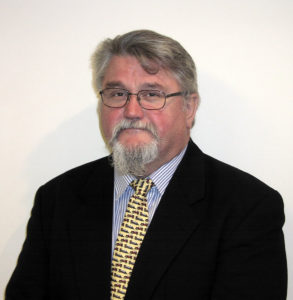Welcome
to
The Future of the Past is Collaboration
2024
Joint Conference
Chairman
Dear Colleagues,
The World Forum for Motor Museums arose out of a proposal by Lord Montagu of Beaulieu and Michael Ware,
Director of the National Motor Museum in summer 1988.
They proposed a gathering of museum directors and curators that specifically collected and displayed road
transport vehicles as their main objective.
The initial aim was to encourage networking, discussion and problem solving under the auspices that a problem
shared is not only a problem halved but often, a problem solved.
Many a problem has been solved during discussions over dinner and yes, even breakfast, so it is vitally important
to us that there are several opportunities to network both in the lecture hall and during our well-planned breaks
and visits.
Over the past 34 years we have seen 16 Fora in 8 different countries and 3 continents and in that time we have
visited many different types of transport museum presented in any number of different ways, we have shared
and learned a lot.
Whilst we could sit back on our haunches and feel that we have covered all bases with prior visits the Secretariat
has always been aware that if we are to understand the overall history of our transport system then we must
include those countries of the Indo Pacific, outside of the USA and Australia.
The obvious choice must then be Japan and of the many worthy museums that Japan has within its boundaries,
then Toyota Automobile Museum rates as one of the most well-balanced museums exhibiting automobiles from
all over the world and has a deep philosophy on the role of auto museums.
I am therefore very proud to welcome you to our hosts in 2024 the Toyota Automobile Museum supported by many
Japanese motoring marques and their museums.
For many of us a visit to Japan will be a once in a lifetime opportunity to learn both from its culture and its museums,
all of which will give us a broader outlook on life which in turn will equip us with a wider view on the world of
transport history.
It is a great truism that the best way of learning is to incorporate it into play as well as in the lecture Hall.
What we offer here is the opportunity to do both in abundance.
In my capacity as Chairman of the World Forum for Motor Museums Secretariat may I say that it has been a great
pleasure to collaborate with my Japanese colleagues working for this project as one team.
Please do join me for this not to be missed opportunity.
Executive Committee Chairman
Thank you for joining us for the World Forum for Motor Museums, the first to be held in Asia and here in Japan.
Together with our fellow Japanese automobile manufacturers and the Japanese National Council of Science Museums,
we are honored to host the conference and thankful for the chance to further understanding of Japan's automobile
industry.
The Toyota Automotive Museum and Fuji Motorsports Museum, both of which celebrate history, join in welcoming
everyone and are grateful for this honor.
The history of gasoline-powered automobiles in Japan dates back to 1898 when the first French-made Panard et Lebasseur
arrived in Japan.
Then, nine years later, in 1907, the first Japan-produced gasoline-powered automobiles the TAKURI was built.
However, it would be another 30 years before the automobile industry was fully established.
Gradually over the next nearly 100 years, the Japanese automobile culture, which began on the foundation of the west
automobile industry grew. Today, it has evolved into its own unique form.
Now, I would like to invite our esteemed panelists to share their unique insights and help further understanding of
automobile history and culture.
I sincerely hope that your stay is meaningful and enriching.


